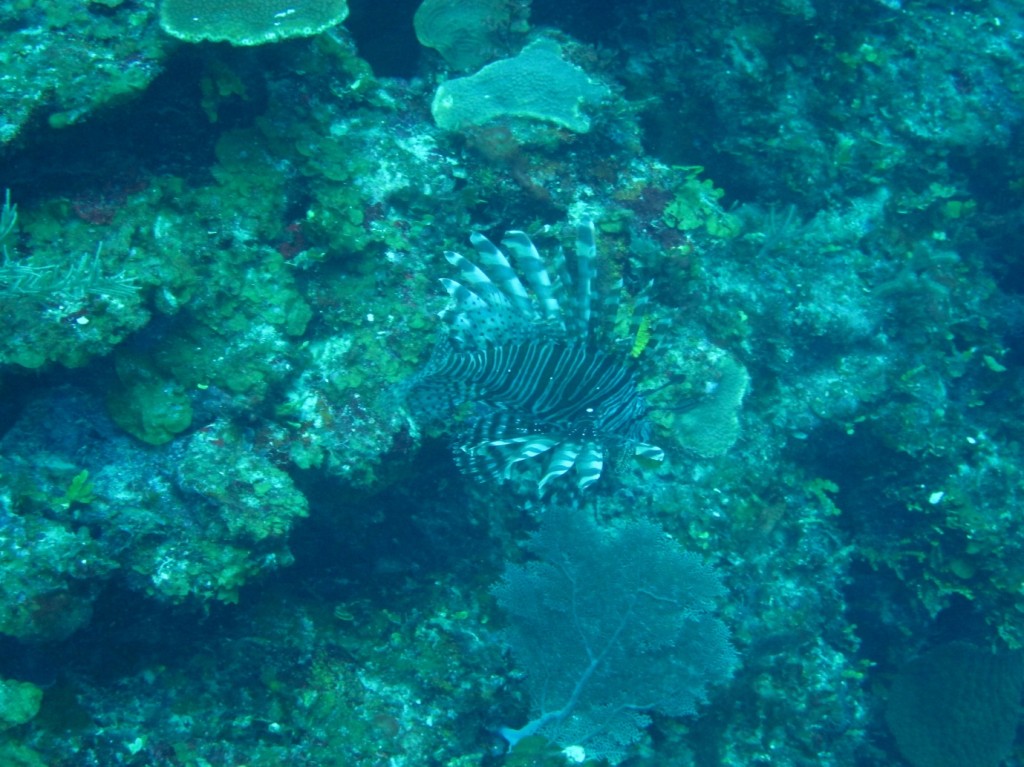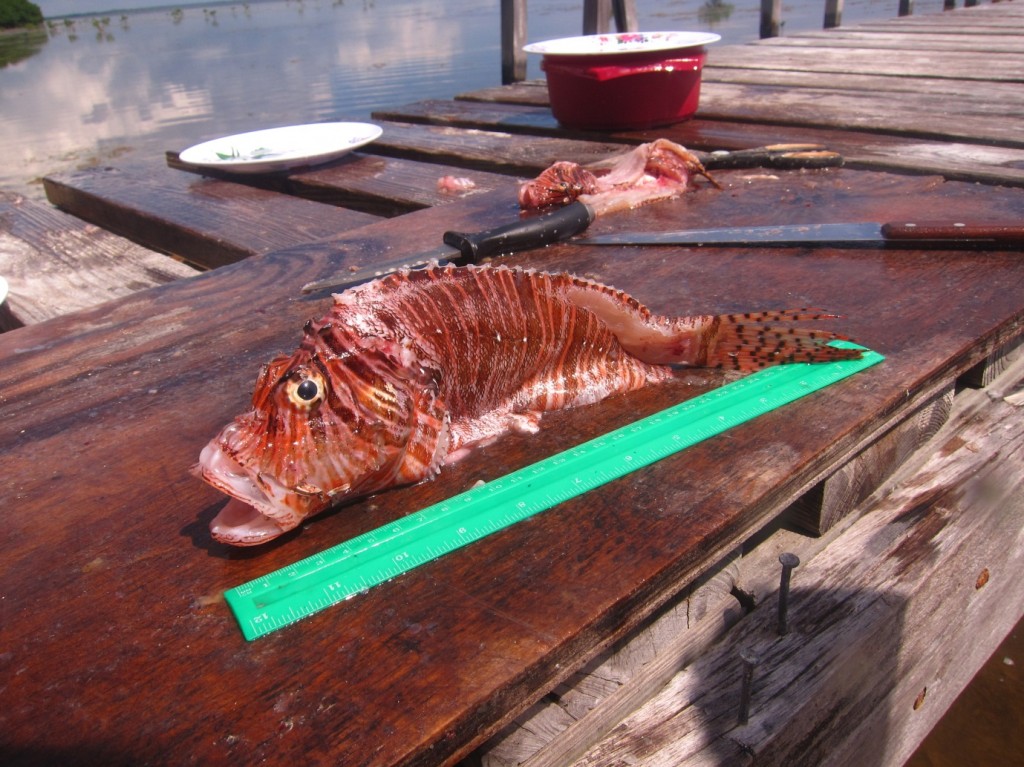by Hayley McKenzie, Blue Ventures volunteer, Belize
The divers hunt in a pack, eyes peeled for the distinctive feathery spines peeking out from behind a rock, huddled into the reef or perched on top of a spur. On sighting a lionfish, the divers alert their leader with a rap on their tank and he advances towards his prey, weapon in hand. A volunteer holds up an empty blue coffin in anticipation, anxiously watching the attack unfold. The leader extends his speargun and deftly makes the first shot, grasping the lionfish, its feathers splayed out in shock. The second piercing kills the fish and the prey is stuffed into the bin, while another volunteer marks down the kill on his slate, hopefully the first of many.
It doesn’t sound like a typical activity for a conservation group, but lionfish culling is actually one of the most valuable things we do out here in Bacalar Chico. This invasive species is not native to these waters (they belong in the Indo-Pacific) and they are voracious consumers of shrimps and juvenile fish, while their poisonous spines make them inedible to other predatory fish. You can see the confidence in their spiny protection by the way they languish on the reef, barely moving as other larger fish and divers swim around them. Luckily it makes them fairly easy prey. As a result of their top-predator status, the lionfishes presence here will result in the rapid downfall of other native, less armoured marine life. We know that their numbers are increasing, with an alarmingly widespread distribution and it’s been shown that lionfish invasion correlates with a dramatic decrease in net fish recruitment by up to 79%.
Once we get back to camp, the fish are taken to the pier (numbering anything from five to thirty, depending on the prowess of the dive leader) and a staff member carefully removes the poisonous spines. Were you to catch your finger on a spine, you would have localised numbness for a number of hours as the spines contain a neurotoxin – but you can inactivate the toxin by immersing the affected area in hot water. Following removal of the spine, a volunteer dissects the fish and documents the fish length, gender and stomach contents. The largest lionfish caught here was 38cm, but they average around 26cm.
They reach sexual maturity after just 1 year, and a female will lay up to 2 million eggs per annum. In their native habitat they breed seasonally but here this has increased to as frequently as every four days, resulting in their increasing presence in the Caribbean.
Following the dissection, the edible parts of the fish are filleted. For most volunteers this is the most enticing thing about hunting lionfish – they are delicious! Last week our camp cook Desi fried them in a light batter, with a little lime juice squeezed over and dipped in mayonnaise (and fry jacks on the side, obviously). We’ve also had them marinated in lime juice and prepared as a ceviche (a kind of cold salsa), which is a local speciality. Lots of us think it’s the most tender, tasty fish we’ve ever had – and it’s actually sustainable!
The divers squabble over who gets to go on the next cull, the leaders argue over who is the most prolific with the spear and we all fight over portion sizes at dinner, but at the end of the day everyone’s a winner because we’ve done something really positive for the reef – and we have fish finger sandwiches in our bellies to prove it.






